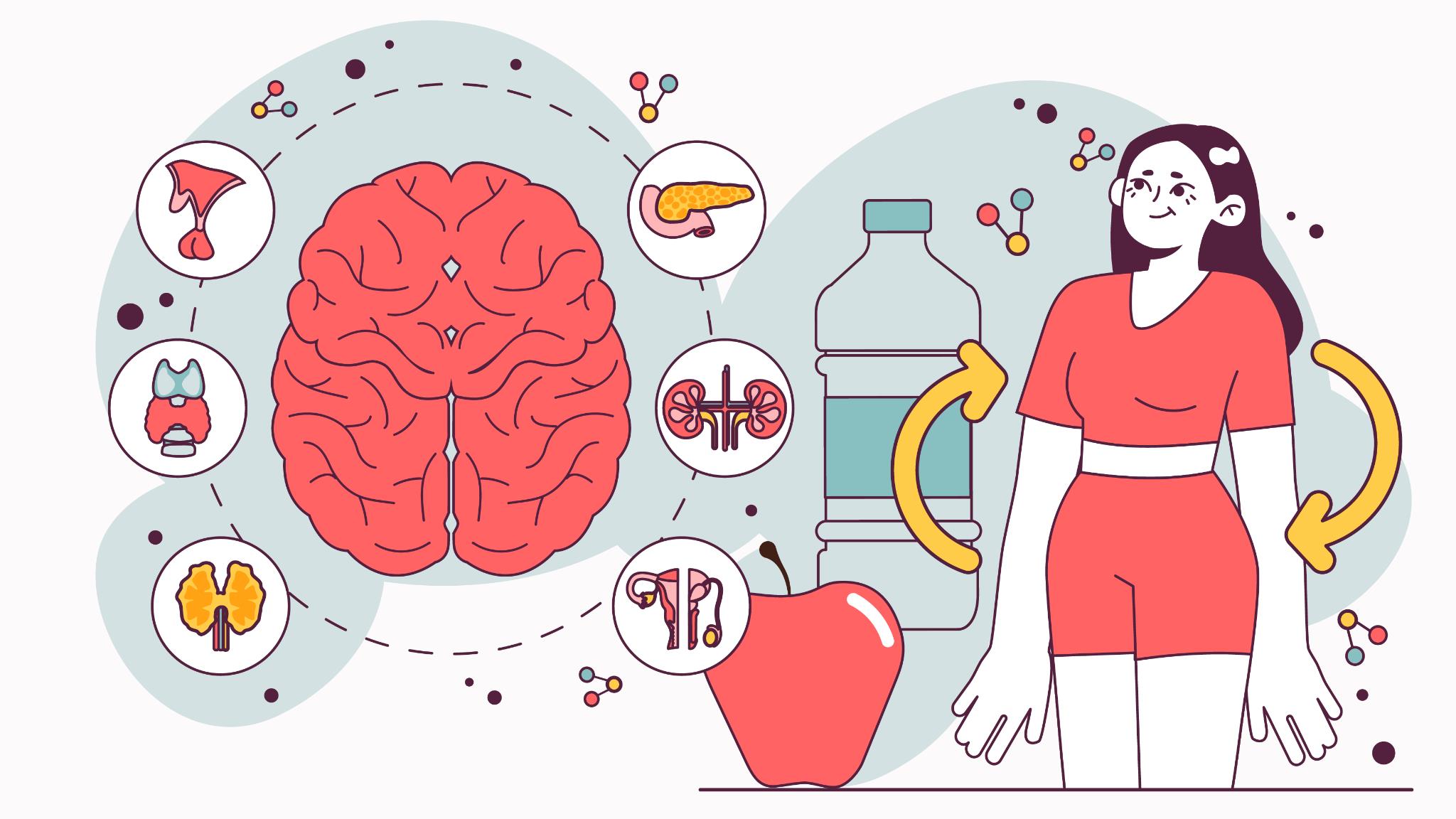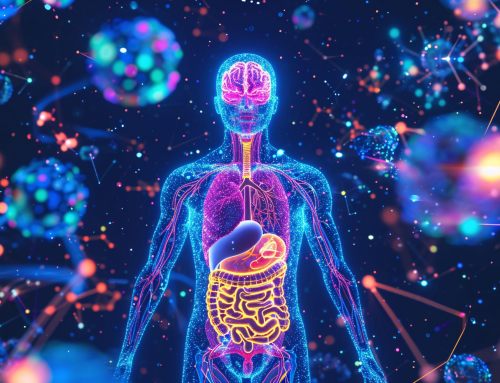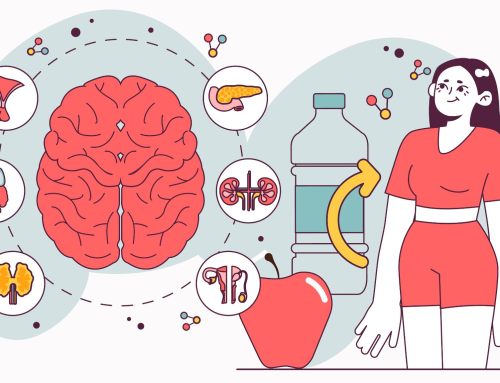Meta-inflammation in Obesity & Its Therapeutic Targeting
Obesity is an increasingly prevalent issue today, affecting more than one billion individuals worldwide; it has more than doubled since 1990 among adults and quadrupled among children and adolescents (1). “Meta-inflammation in obesity & its therapeutic targeting,” published in Science Translational Medicine, addresses a number of complex interactions in obesity, with a focus on underlying mechanisms that drive this multifaceted condition. In the context of functional medicine, this article explains the significance of addressing the root causes of obesity, which include nutrition, lifestyle, and environmental influences. The study reviews recent research that has highlighted the significant role of meta-inflammation, altered immune functions, and gut microbiota in the pathogenesis of obesity. These factors contribute to the complex interplay among genes, environment, nutrition, and lifestyle factors in influencing the etiology of obesity (2).
Systemic, Meta-inflammation in Obesity
Obesity is a multifactorial condition marked by an excessive accumulation of adipose tissue, resulting in compromised metabolic processes. Meta-inflammation is a chronic, systemic, low-grade inflammatory state suggested to be strongly associated with obesity, affecting all metabolic organs (2).
While acute, short-term inflammation is a protective response to infection or injury, meta-inflammation is triggered by the excess of adipose tissue. This adipose tissue secretes pro-inflammatory cytokines, including TNF-α, IL-6, and IL-1β, leading to systemic inflammation. When the body is in a chronic inflammatory state, normal metabolic processes are disrupted (such as insulin signaling), contributing to insulin resistance, dyslipidemia, and an increase in lipid storage in skeletal muscle and the liver. Meta-inflammation is, therefore, both a consequence and a driver of obesity, creating a vicious cycle that exacerbates the condition.
Excess Adipose Tissue (AT) Drives Metabolic Alterations
In obesity, the number and size of adipocytes increase. This expansion of fat tissue is often accompanied by increased production of inflammation, a biological response to harmful stimuli such as pathogens, damaged cells, or irritants. Prolonged elevated inflammation interferes with insulin signaling pathways, among other metabolic functions.
In addition to their role in energy storage, adipocytes also function as endocrine cells, releasing hormones and inflammatory factors affecting various processes in the body. In the context of obesity, these factors include cytokines (like TNF-α and IL-6), chemokines, and other signaling molecules that can lead to chronic, low-grade inflammation (2).
The surge in derived adipocyte-derived inflammatory factors in obesity contributes to altered metabolic and vascular health functions, all of which further induce a pro-inflammatory state. Disruptions in metabolic processes affect insulin signaling and can contribute to insulin resistance, a key feature of type 2 diabetes (T2D). These factors also impede lipid metabolism, which can result in dyslipidemia.
Vascular health is also compromised as a result of chronic inflammation and oxidative stress induced in obesity, damaging the inner lining of blood vessels, increasing risk of endothelial dysfunction. This can lead to hypertension, increasing the risk of atherosclerosis and cardiovascular disease (CVD). In addition to chronic inflammation in adipose tissue, other metabolically impactful tissues that are affected include the liver, skeletal muscle, pancreatic islets, and the brain.
Alterations in Hypothalamus
Changes in the hypothalamus are also evident in obesity. The hypothalamus is a critical brain region that modulates hunger, satiety, and energy balance by integrating signals from the hypothalamic pituitary adrenal (HPA) axis relative to food intake and adipose tissue storage. Over time, the hypothalamus becomes less responsive to these regulatory signals, which include ghrelin related to hunger and leptin to satiety. This impaired signaling exerts a pivotal influence on metabolic and endocrine balance, contributing to overeating and reduced energy expenditure, perpetuating weight gain. Chronic inflammation can also impede signaling in the hypothalamus, further driving the cycle of obesity.
Impeded Immune Function & Reduced Microbiota Diversity
The immune system has extensive homeostatic functions in the body (2). Therefore, when it is impeded, this can cause disruptions in a number of bodily processes. As nearly 80% of the immune system is housed in the gut, the composition and quality of our gut microbiome plays a significant role in obesity (3). In addition to shaping our immune system, microbiota also have important regulatory functions in metabolic health (4).
A growing body of research demonstrates that innate immune cells, such as macrophages play an integral role in the pathophysiology of obesity and inflammation (2-6). Activation of the immune system by environmental factors (diet, stress, sedentary lifestyle, insufficient sleep, and nutrition) increases inflammation by triggering the recruitment of innate immune cells, further exacerbated by obesity.
A compromised gut barrier and reduced microbiota diversity have been found to be associated with obesity (2, 7). The composition and diversity of gut microbiota are significantly altered in obese individuals compared to lean individuals. Certain microbiota populations such as Firmicutes, Bacteroidetes, and Akkermansia are found in different proportions in obese individuals, impeding metabolic and immune functions (8).
Dysbiosis, an imbalance in gut microbiota, has been linked to increased gut permeability, systemic inflammation, and metabolic disturbances that contribute to obesity (7). Intestinal permeability allows the passage of toxins into the bloodstream, further impeding these processes. Beneficial and diverse microbiota, on the other hand, can produce metabolites such as short-chain fatty acids that interact with host metabolism and immune function.
Environmental and lifestyle factors influence the composition of the microbiome and the quality of the epithelial barrier. A diet high in refined carbohydrates, sugar, and processed foods as well as consumption of poor quality fats decreases the quality of the gut microbiome,. Stress, environmental toxins, and impaired sleep further compound these issues as the normal immune system response or defense in the body is compromised.
Changes in Adaptive Immune Memory to Metabolic Signaling
Impeded immune function plays an integral role in the development and progression of obesity. Adipose tissue (AT) immune cells provide various regulatory functions that are altered, adopting pro-inflammatory phenotypes. This can lead to systemic issues such as insulin resistance, hyperglycemia, and dyslipidemia, increasing cardiometabolic disease risk. As emphasized, obesity-associated inflammation affects all metabolic organs, with significant changes in both innate and adaptive immune cells in adipose tissue, linking immune memory to metabolic regulation.
In addition to diet, lifestyle, and environmental factors, an excess of processed foods, refined carbohydrates, sugar, and saturated fat can activate the immune system. The adaptive immune system forms a memory of metabolic signals in obesity. T and B cell function becomes compromised over time due to the altered metabolic environment in obesity, such as an increase in fatty acids and glucose. As a result, these cells mount a more rapid and robust inflammation and contribute to the metabolic and vascular complications associated with obesity.
The immune system’s response to persistent inflammation in obese individuals involves the recruitment and activation of various immune cells (including macrophages, T cells, and B cells) in adipose tissue. These immune cells further perpetuate the inflammatory environment by releasing additional cytokines and chemokines. T cells play a crucial role in adipose tissue homeostasis by regulating inflammation and maintaining immune balance, influencing metabolic functions and overall tissue health. B cells also contribute to tissue balance by producing antibodies and cytokines that regulate inflammation and support metabolic processes.
Excess fat leads to the accumulation of pro-inflammatory T cell population (THI and TH17) rather than regulatory or anti-inflammatory cells (TH2 and Treg) in visceral adipose tissue, exacerbating inflammation. B-2 cells are also increased rather than regulatory B-1 cells, promoting inflammation by secreting higher levels of pro-inflammatory cytokines, including IL-6 and IFN-γ, while reducing the production of the anti-inflammatory cytokine IL-10. Along with modifications in adipose tissue, innate lymphoid cells are also suggested to be regulators and responders to the inflammatory response in obesity.
Moreover, obesity-induced changes in immune function can impair the body’s ability to respond to infections and other diseases, compromising the health status of obese individuals. These findings indicate that various parts of the immune system retain a memory of previous obesity.
Target Inflammation & Interconnected Systems With Diet & Lifestyle
The interaction between meta-inflammation, altered immune functions, and gut microbiota illustrates the complexity of obesity. Therapeutic approaches targeting these interconnected systems hold promise for more efficacious treatments.
Mediterranean Diet & Intermittent Fasting – Following a mediterranean diet provides nutrient density, while supporting the mitigation of inflammation and oxidative stress in the body. This diet is also rich in plant compounds supporting the gut and immune function.
An increase in plants, fiber, antioxidants, and fermented foods modulates inflammation by releasing short chain fatty acids, provide rich sources of pre and probiotics, thereby nourishing and diversifying the microbiome. The more diverse the microbiome, the less pathogenic and inflammatory its ecosystem will be. Intermittent fasting (IF) can also support cellular health, and metabolic and immune functions relative to obesity.
Exercise & Weight Loss – Physical activity is essential in addressing obesity. Routine exercise for 6-12 months has been shown to reduce levels of leptin, adiponectin, resistin, homocysteine, and IL-6 (2). While cardio is important, weight resistance is also highly beneficial as it improves glycemic control and reduces visceral adipose tissue.
Impact of Stress & Environmental Toxins – Toxins from the environment and chronic stress can further impede pathways and contribute to vicious cycles of oxidative stress, altered microbiota composition, and inflammation (9). Being mindful of minimizing these exposures is therefore important.
Sleep & Circadian Rhythm – Research demonstrates connections between misaligned circadian rhythm and impeded physiological functions underlying obesity (10). A number of metabolic and hormonal disruptions were observed in individuals engaging in shift work with disrupted sleep patterns. Further research highlights that long-term disruptions in circadian rhythm are associated with impeded metabolic pathways, contributing to the complexity of obesity (11). Prioritizing quality sleep is significant for optimal homeostatic functions (including metabolic, inflammatory, and immune function, as well as gut microbiota) in the body relative to this condition.
Future Directions for Obesity
The interplay of meta-inflammation, altered immune functions, and gut microbiota significantly contributes to the underlying causes of obesity. Chronic inflammation driven by excess adipose tissue disrupts metabolic processes, while immune system dysregulation further exacerbates the inflammatory environment. Concurrently, imbalances in gut microbiota further influence energy metabolism and immune responses.
As research continues to unravel the complexities of these interactions, it will pave the way for more efficacious treatment modalities that address inflammation and tackle obesity.
Understanding the processes that maintain this chronic condition can lead to more efficacious and personalized treatments. Join us for this free online event on June 18th, from 5 to 7 pm, to learn about clinical emerging treatments in addressing this vicious cycle of obesity from underlying causes. Speakers will include experts in the field: Jeffrey Bland, PhD, Carrie Jones, ND, FABNE, MPH, and Peter Kozlowski, MD.
References:
- NCD Risk Factor Collaboration (NCD-RisC).Worldwide trends in underweight and obesity from 1990 to 2022: a pooled analysis of 3663 population-representative studies with 222 million children, adolescents, and adults. Lancet. 2024 March 16; 403, 10431. doi.org/10.1016/S0140-6736(23)02750-2
- Schleh MW, Caslin HL, Garcia JN, Mashayekhi M, Srivastava G, Bradley AB, Hasty AH. Metaflammation in obesity and its therapeutic targeting. Sci Transl Med. 2023 Nov 22;15(723):eadf9382. doi: 10.1126/scitranslmed.adf9382. Epub 2023 Nov 22. PMID: 37992150; PMCID: PMC10847980.
- Wiertsema SP, van Bergenhenegouwen J, Garssen J, Knippels LMJ. The Interplay between the Gut Microbiome and the Immune System in the Context of Infectious Diseases throughout Life and the Role of Nutrition in Optimizing Treatment Strategies. Nutrients. 2021 Mar 9;13(3):886. doi: 10.3390/nu13030886. PMID: 33803407; PMCID: PMC8001875.
- Saad MJ, Santos A, Prada PO. Linking Gut Microbiota and Inflammation to Obesity and Insulin Resistance. Physiology (Bethesda). 2016 Jul;31(4):283-93. doi: 10.1152/physiol.00041.2015. PMID: 27252163.
- de Heredia FP, Gómez-Martínez S, Marcos A. Obesity, inflammation and the immune system. Proc Nutr Soc. 2012 May;71(2):332-8. doi: 10.1017/S0029665112000092. Epub 2012 Mar 20. PMID: 22429824.
- Scheithauer TPM, Rampanelli E, Nieuwdorp M, Vallance BA, Verchere CB, van Raalte DH, Herrema H. Gut Microbiota as a Trigger for Metabolic Inflammation in Obesity and Type 2 Diabetes. Front Immunol. 2020 Oct 16;11:571731. doi: 10.3389/fimmu.2020.571731. PMID: 33178196; PMCID: PMC7596417.
- Lau WL, Tran T, Rhee CM, Kalantar-Zadeh K, Vaziri ND. Diabetes and the Gut Microbiome. Semin Nephrol. 2021 Mar;41(2):104-113. doi: 10.1016/j.semnephrol.2021.03.005. PMID: 34140089.
- Liu BN, Liu XT, Liang ZH, Wang JH. Gut microbiota in obesity. World J Gastroenterol. 2021 Jul 7;27(25):3837-3850. doi: 10.3748/wjg.v27.i25.3837. PMID: 34321848; PMCID: PMC8291023.
- Soysal P, Arik F, Smith L, Jackson SE, Isik AT. Inflammation, Frailty and Cardiovascular Disease. Adv Exp Med Biol. 2020;1216:55-64. doi: 10.1007/978-3-030-33330-0_7. PMID: 31894547.
- 10.Meléndez-Fernández OH, Liu JA, Nelson RJ. Circadian Rhythms Disrupted by Light at Night and Mistimed Food Intake Alter Hormonal Rhythms and Metabolism. Int J Mol Sci. 2023 Feb 8;24(4):3392. doi: 10.3390/ijms24043392. PMID: 36834801; PMCID: PMC9963929.
- Serin Y, Acar Tek N. Effect of Circadian Rhythm on Metabolic Processes and the Regulation of Energy Balance. Ann Nutr Metab. 2019;74(4):322-330. doi: 10.1159/000500071. Epub 2019 Apr 23. PMID: 31013492.











